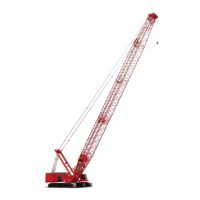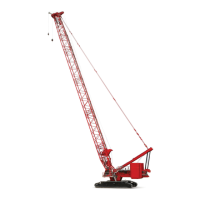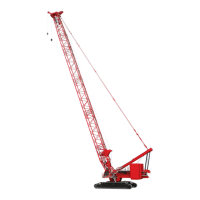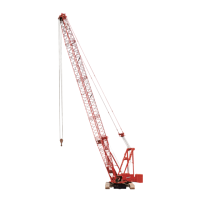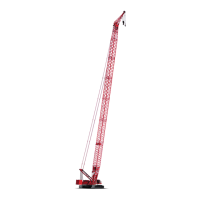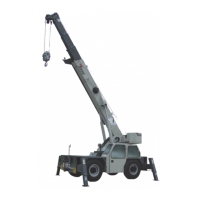Manitowoc Published 08-06-19, Control # 237-09_v1 3-31
MLC165-1 OPERATOR MANUAL OPERATING CONTROLS AND PROCEDURES
OPERATING LIMITS AND FAULTS
The following limits and faults can be activated during crane
operation.
For luffing jib limits and faults, see the MLC165 Luffing Jib
Operator Manual.
Boom Max Up Limit
Fault 55
A limit switch stops the boom hoist when the
boom is raised to the maximum angle.
• 82.7° for boom without luffing jib
• 88.0° for boom with luffing jib
To correct the fault once it is activated, lower the boom. This
fault cannot be bypassed.
The boom max up limit angle must be adjusted each time the
luffing jib is installed or removed. See the Service Manual for
the adjustment procedure.
Minimum Bail Limit
Fault 57
A limit switch stops the drum in the pay-out
direction if three wraps of wire rope remain
on the drum.
To correct the fault once it is activated, haul-in rope onto the
drum.
To remove wire rope from the drum, the limit bypass switch
can be used to pay out the wire rope beyond the limit.
Block-Up Limit
Fault 60
A limit switch stops the boom hoist in the
down direction and the load hoists in the up
direction if a load is hoisted too close to the
point.
To correct the fault once it is activated, operate the boom
hoist in the up direction and operate the load hoist in the
down direction.
The limit bypass switch must be turned to the bypass
position before a load can be hoisted above the limit.
Mast Too Far Forward
Fault 66
This limit stops the mast if it is lowered to
160°. To correct the fault once it is
activated, operate the boom hoist in the
up direction.
Rated Capacity Limit
Fault 54
This software limit stops the hoist in the
raise direction if the crane’s rated capacity is
exceeded. See the MLC165-1 RCL/RCI
Manual for instructions.
WARNING
Falling Boom/Jib Hazard
Do not raise boom above specified maximum angle.
Boom and jib could be pulled over backward.
WARNING
Two-Blocking Hazards
If it is necessary to hoist a load above the block-up limit,
do so slowly with extreme caution to prevent two-blocking.
Do not use the limit bypass switch to lower the boom after
the block-up limit is contacted, otherwise two-blocking
could occur, causing the load to fall.

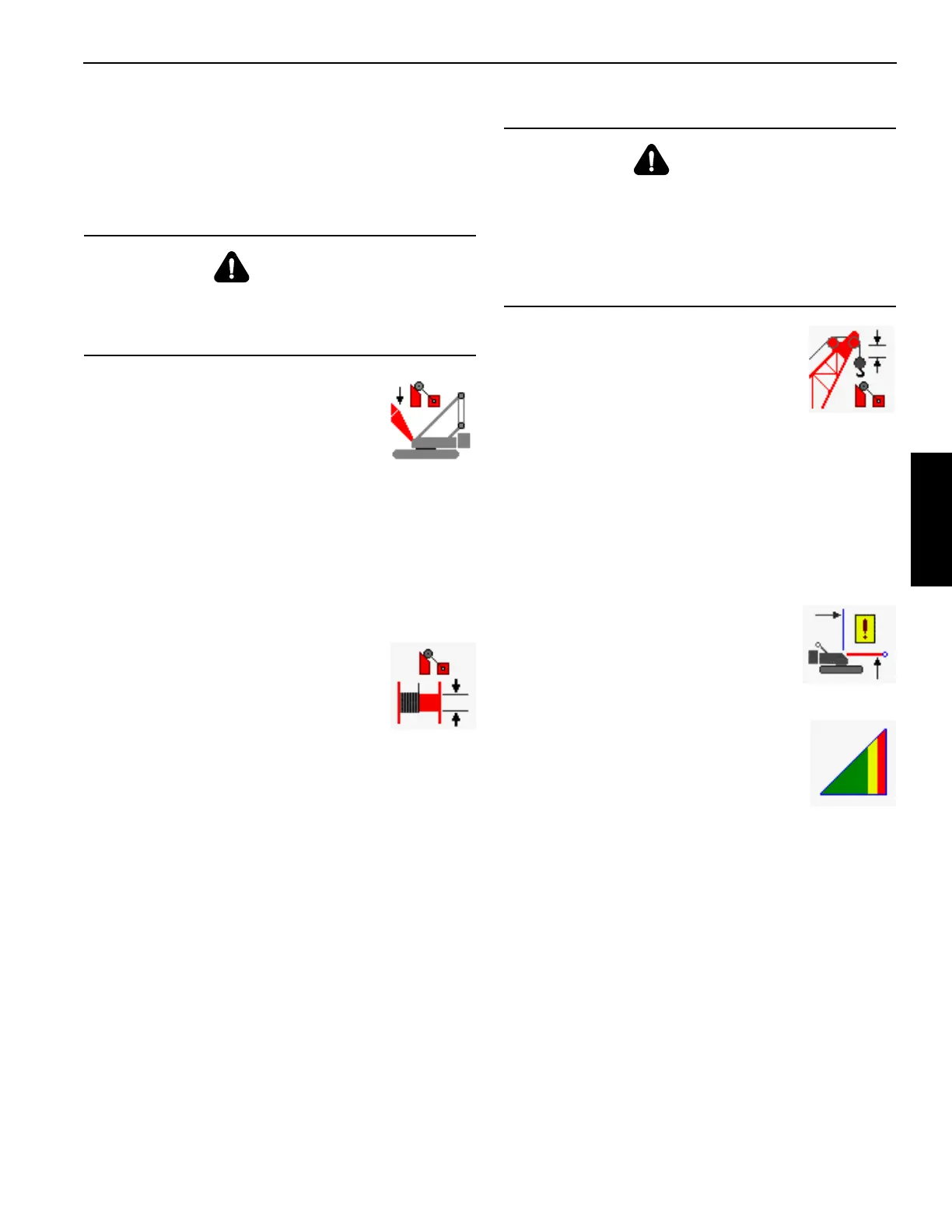